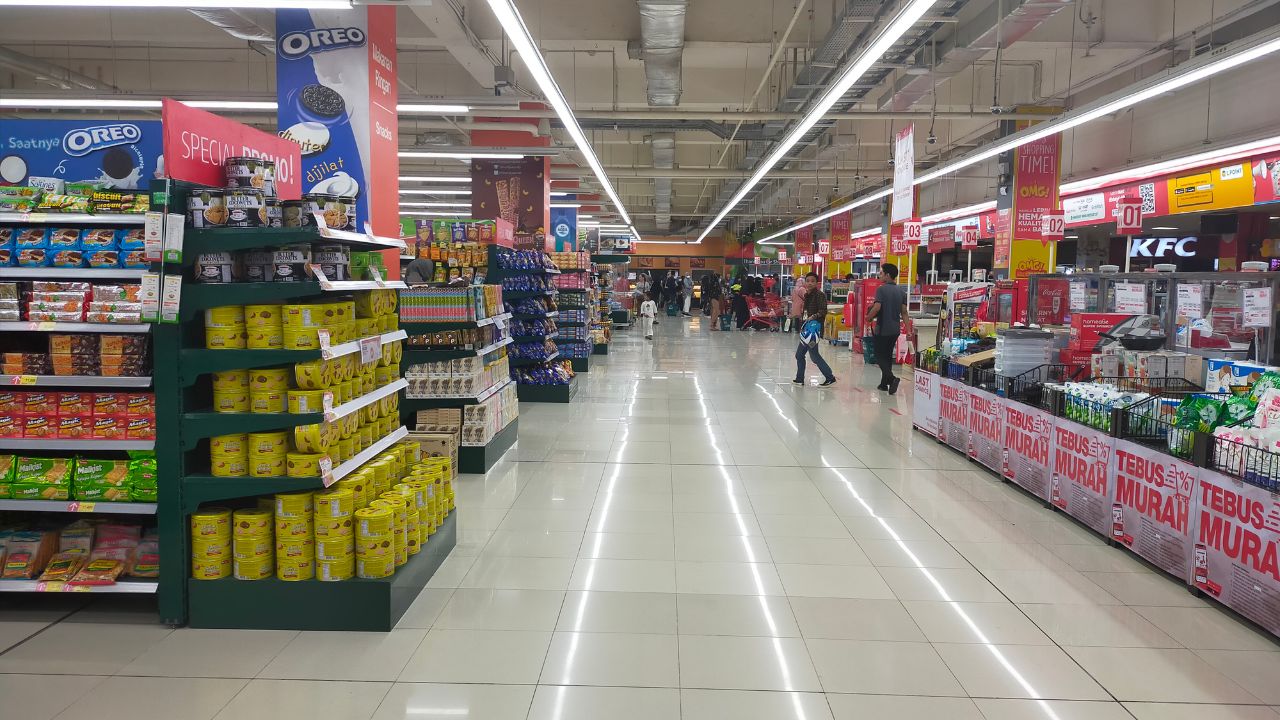Merchandising plays a crucial role in the success of any retail business. Properly designed strategies can enhance the shopping experience, boost sales, and improve customer retention. If you want to learn how to merchandise in retail, this guide shares five simple tips to help turn your store into a successful retail space.
From crafting captivating visual displays to optimizing store layouts, these actionable insights will set your business up for success.
Why Effective Merchandising Matters
Merchandising isn’t just about organizing products—it’s about creating a smooth, engaging shopping experience that boosts sales and builds your brand. Smart visual merchandising attracts customers, highlights your products, and encourages them to buy.
Whether you run a small boutique or a large department store, how you merchandise affects product placement, store efficiency, and overall appeal.
Let’s go over five helpful tips for merchandising in retail that can improve your store’s look and boost profits.
1. Design Engaging Retail Displays
Retail displays act as silent salespeople in your store. A well-designed display can stop a shopper in their tracks, create moments of inspiration, and make products irresistible.
How to Get It Right:
- Create a Theme: Use seasonal, trendy, or holiday themes to make displays more relatable and timely. For example, a back-to-school display could feature notebooks, backpacks, and water bottles in a playful arrangement, attracting families and students.
- Tell a Story: Arrange products to tell a cohesive story. For instance, a “summer essentials” display could group sunglasses, hats, and SPF creams, helping customers envision what they need for a beach trip.
- Use the Rule of Three: Odd numbers are more visually appealing, so group similar products in sets of three for an inviting aesthetic. This practice draws the eye and encourages customers to consider buying multiple items.
Use Props: Don’t be afraid to use small props or signage to enhance the display and highlight product benefits, like “Best Seller” or “Limited Time Offer.”
Pro Tip: Position key displays at the front of your store to captivate foot traffic. Highlight new arrivals, promotional products, or bestsellers here to set the tone and make an immediate impression.
2. Master the Art of Product Placement
Strategic product placement is essential to maximize visibility and sales. The locations where you place certain products—and how they relate to others—can make a big difference in what customers choose to purchase.
Strategies for Effective Product Placement:
- Place Essentials at the Back: Encourage customers to walk through the store by putting high-demand items, like staples, at the back. In grocery retail, for example, placing dairy near the rear ensures shoppers pass by numerous impulse and complementary products along the way.
- Highlight Impulse Buys: Position small, affordable items near checkout counters to drive last-minute purchases. Think snacks, magazines, or travel-sized toiletries—products that shoppers might purchase without much deliberation.
- Use Eye-Level Shelves: Products placed at eye level are more likely to grab attention. For children’s items, positioning them at a child’s eye level can increase appeal and lead to higher sales in that category.
Cross-Merchandising: Place related products together—for instance, pasta near pasta sauces, or coffee beans next to grinders—to make shopping easier and spark additional sales.
Remember: Good product placement means making items easy to see and placing them with purpose—helping customers explore, buy more, and come back again.
3. Plan an Effective Store Layout
A well-planned store layout ensures a smooth shopping experience while guiding customer flow and showcasing key merchandise. The physical route shoppers take has a surprising impact on their decisions.
Popular Layout Types:
- Grid Layout: Common in grocery stores, the grid pattern allows for efficient use of space and clear navigation. It’s perfect for extensive inventories and encourages customers to browse multiple aisles.
- Free-Flow Layout: Best for boutiques or high-end stores. This layout eliminates strict aisle structure, allowing customers to wander freely, which can foster unplanned discoveries and longer visits.
- Loop Layout: Often used in large retail spaces, this style creates a circular flow that leads customers through the entire store, ensuring all major sections are visited.
Tips for Success:
- Ensure pathways are clear and spacious to enhance the shopping experience and accommodate foot traffic, wheelchairs, and strollers.
- Place attention-grabbing displays and promotional signage along main traffic areas or transitions between departments.
- Allocate ample space around high-priority products so they stand out and are easily accessible.
Identify popular (hot) and ignored (cold) areas using data or heatmaps, then adjust your layout to improve visibility and keep shoppers engaged.
A good store layout is both practical and welcoming, guiding shoppers smoothly through each section and showing them your full range of products.
4. Elevate the Customer Experience with Visual Merchandising
Understanding how to merchandise in retail means combining creativity and strategy to design product displays that drive sales. Elements like lighting, signage, and color schemes all play a role in shaping how shoppers perceive and interact with your store.
Key Visual Principles:
- Lighting: Use bright, focused lighting to highlight key products and features; for instance, spotlight new arrivals or seasonal picks. Warmer, dimmer lighting can make lounge areas or luxury corners feel more comfortable.
- Color Psychology: Leverage colors to influence moods and purchasing behaviors. Red and orange create a sense of urgency, making them great for sales, while green and blue feel calm and build trust, perfect for wellness or tech areas.
- Texture & Contrast: Incorporate a mix of textures, fabrics, and contrasting displays to create visual interest and emphasize product uniqueness. For example, pairing smooth ceramics with woven baskets in a homeware section can inspire creative use at home.
Use digital screens to show helpful content, like outfit ideas in clothing stores or recipes in supermarkets.
Don’t underestimate the power of visuals. Well-designed visual merchandising can turn casual browsers into loyal customers and reinforce your store’s brand identity every time they visit.
5. Leverage Data for Smarter Decisions
Understanding customer behavior is an essential part of successful retail merchandising. Data-driven decisions allow you to adapt and improve merchandising strategies continuously.
How to Merchandise in Retail Using Data:
- Inventory Insights: Track which products move the fastest and which linger on shelves. Rotate or re-merchandise slow-moving inventory to keep the offer fresh and avoid stale displays.
- Shopper Analytics: Use footfall counters, dwell time trackers, or heatmaps to identify high-traffic areas, then adjust retail displays and shelving accordingly.
- A/B Testing: Experiment with different layouts, colors, signage, or end-cap displays to see what resonates most with your audience. Swap product positions periodically to test if a new location increases sales.
Customer Feedback: Encourage customer feedback, both informal and through surveys, to reveal insights you might miss with data alone, such as why shoppers might avoid certain sections or find navigation confusing.
With data-driven strategies, you can refine your approach to how to merchandise in retail, proactively responding to evolving customer needs and maximizing store performance.
Wrapping It Up
Learning how to merchandise in retail means using both creativity and strategy, with the customer in mind. From eye-catching displays to smart store layouts and visual techniques, these tips help you improve your retail space.
Remember, merchandising is a dynamic process—monitor trends, learn from competitors, and never stop testing new ideas.
Keep in mind that the ultimate goal is to engage your audience, boost conversions, and forge lasting customer relationships. A commitment to ongoing improvement and smart, data-driven design will keep your store vibrant and competitive.
If you want to improve your retail strategy, visit Marketing Immersion for expert help with retail merchandising and data-driven solutions for your business.






